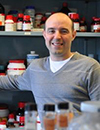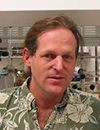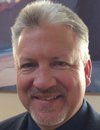07:45 | Conference Registration, Conference Materials Pick-Up, Morning Coffee and Breakfast Pastries in the Exhibit Hall |
|
Session Title: The Translation of Next Generation Sequencing from Research to Clinical Deployment |
| |
09:00 | Opportunities and Challenges of Implementing Next Generation Sequencing (NGS) for Delivery of Genomic Medicine
Nazneen Aziz, Executive Director, Kaiser Permanente Research Bank, United States of America
Many important advances in technologies for molecular analyses have fostered the rapid growth in molecular medicine. The use of these technologies in testing of DNA, RNA, proteins for screening, diagnosing and prognosis of patient’s disease, and also in the development of new biologics and small molecule drugs have given rise to a science that 30 years ago was practically non-existent. Each of these technologies has led to significant advances, but one in particular, can be undoubtedly labeled as ‘disruptive’. Next generation sequencing (NGS), introduced in 2005, has revolutionized the field by increasing the speed at which the genome can be sequenced at an exponentially lower cost. Within 5 years of its introduction and widespread use in research, NGS is transforming molecular medicine. NGS has a higher throughput and lower cost per base and therefore has been rapidly adopted into clinical testing. What is particularly intriguing about NGS’s rapid adoption into clinical testing is that it has a number of intricacies associated with its implementation that is unfamiliar to clinical laboratory or to healthcare professionals. Importantly, the implementation of genomic analysis into routine clinical practice will take a dedicated and collaborative effort between physicians, scientists, and all healthcare professionals. There are knowledge gaps in understanding when and what tests to order, how tests are validated and made ready for clinical use and how to interpret test reports. Additionally, there is lack of data sharing to eradicate the limited understanding of genomic variants and their involvement in health and disease. Dr. Aziz will address the opportunities, complexities and challenges associated within our healthcare system and institutions, for implementing genomics into clinical practice. |
09:30 | The Challenges in Clinical Implementation of NGS Tests
Erick Lin, Director of Medical Affairs, Ambry Genetics, United States of America
The adoption and clinical implementation of NGS tests has become a benchmark in advancing precision medicine, but the realities of adopting it and obtaining reimbursement for tests presently being offered are difficult. This presentation will focus on Ambry’s experience in adopting and offering NGS tests to its clients, including the need to help clients navigate the complexities of interpreting and understanding the tremendous amounts of data generated by NGS tests. |
10:00 | Next Generation Sequencing for Clinical Applications: Challenges and Current Trends in Developing Clinical Tests
Martin Siaw, Vice President of Science and Innovation, BasePrime Genomics, United States of America
Next Generation Sequencing has evolved very rapidly and is now used for molecular testing in clinical laboratories. This powerful technology offers many exciting opportunities for use in clinical testing. However, NGS also presents many challenges, including the differences between research and clinical labs, and the rapid evolution of platforms, protocols, and reagents. There is a need to recognize the challenges and current trends that are specific to CLIA lab environments when developing and validating clinical NGS tests. Some specific clinical applications will be presented.
|
10:30 | Coffee Break and Networking in the Exhibit Hall: Visit Exhibitors and Poster Viewing |
11:15 | 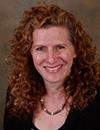 | Keynote Presentation Genomics in Clinical Practice: Patient Stories from the Frontline
Jennifer Friedman, Clinical Professor of Neurosciences and Pediatrics, Rady Children's Hospital in San Diego, United States of America
Advances in genome sequencing hold tremendous promise for providing answers, tailored therapies and in some case cures for undiagnosed patients. However, how to interpret and act upon volumes of complex genomic data remains a challenge for sequencing providers, physicians and their patients and families. Uncertain and non-validated results present obstacles in attaining goals of diagnosis and cure. Off-target results may create unforeseen medical and ethical challenges. This presentation will use case-based examples to demonstrate promises and pitfalls encountered in application of genomic sequencing to diagnosis of patients with rare disease. |
|
11:45 | NGS to Assess Low Input exRNA Samples
Kendall Van Keuren-Jensen, Professor and Deputy Director, Translational Genomics Research Institute, United States of America
It is challenging to work with and achieve low-bias comprehensive profiles with low input RNA samples. We will describe various kits and data analysis strategies. |
12:15 | Networking Lunch in the Exhibit Hall: Visit Exhibitors and Poster Viewing |
|
Session Title: Study of Circulating Tumor Cells (CTCs) and Vesicles as Paradigms for Single Cell Analysis (SCA) |
| |
14:00 | Enabling Microfluidics and Nanosensing Technologies for Circulating Biomarker Analysis
Yong Zeng, Associate Professor, University of Florida, United States of America
Developing circulating biomarkers and blood-based tests is extremely appealing for non-invasive cancer diagnosis and monitoring of therapy response where tissue biopsy is highly invasive and costly. However, in many case circulating biomarkers (e.g., ctDNA, proteins and exosomes) are present at very low concentration levels. In comparison with nucleic acids that can be amplified, quantitative detection of low-level proteins and extracellular vesicles remains very challenging. We have been developing new nanotechnology and microfluidics-based sensing platforms for ultrasensitive analysis of circulating biomarkers with broad dynamic range. These technologies substantially enhances the analytical performance, while reducing the sample demand and analysis time. We will demonstrate the applications of these microfluidic platforms to quantitative analysis of protein biomarkers and tumor-derived exosomes in circulation as a means for liquid biopsy based non-invasive diagnosis of cancer diagnostics. Overall, these microfluidic systems would provide enabling bioanalytical technologies to promote quantitative measurement of complex biological systems and clinical disease diagnosis. |
14:30 | Interrogation of Single Circulating Tumor Cells using Microchannel Enrichment
Lyle Arnold, Chief Scientific Officer, Biocept, United States of America
Liquid biopsies offer the opportunity to interrogate a number of different target sample types, including CTCs. At Biocept both ctDNA and CTCs are used for identifying medically actionable biomarkers. In this presentation the use of a unique patented microchannel will be high-lighted that enables the capture, enrichment, and analysis of CTCs at the single cell level. This allows for the direct visual analysis of CTCs, and has enabled the clinical validation of an array of biomarkers using FISH and protein analysis methods for HER2, FGFR1, MET, ALK, ROS1, ER, PR, AR, and PDL-1 across a range of cancer types. In addition, CTCs can be isolated from the microchannel and interrogated using other means, including NGS. |
15:00 | Next-Generation Liquid Biopsy
Eric Kaldjian, Chief Medical Officer, RareCyte, United States of America
To fully exploit the non-invasive potential of liquid biopsy, rare cells must be collected and identified without size or protein expression bias and be available for assessment of pertinent phenotypic and molecular characteristics. This presentation will describe pre-clinical and clinical applications of the recently commercialized AccuCyte-CyteFinder system, an integrated platform technology for collection, up to six-parameter visualization, and single-cell retrieval for genomic analysis of circulating tumor and fetal cells. |
15:30 | Coffee Break and Networking in the Exhibit Hall: Visit Exhibitors and Poster Viewing |
|
STRATEC Consumables Symposium on Innovations in Microfluidics and Lab-on-a-Chip and their Impact on Life Sciences and Diagnostics | Session Sponsors |
| |
16:00 | Introduction to the STRATEC Consumables Symposium and Topics Addressed in 2016 |
16:15 | 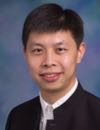 | Keynote Presentation Microfluidic Printing: From Combinatorial Drug Screening to Artificial Cell Assaying
Tingrui Pan, Professor, Department of Biomedical Engineering, University of California-Davis, United States of America
Microfluidic impact printing has been recently introduced, benefiting from the nature of simple device architecture, low cost, non-contamination, scalable multiplexability and high throughput. In this talk, we will review this novel microfluidic-based droplet generation platform, utilizing modular microfluidic cartridges and expandable combinatorial printing capacity controlled by plug-and-play multiplexed actuators. Such a customizable microfluidic printing system allows for ultrafine control of the droplet volume from picoliters (~10pL) to nanoliters (~100nL), a 10,000 fold variation. The high flexibility of droplet manipulations can be simply achieved by controlling the magnitude of actuation (e.g., driving voltage) and the waveform shape of actuation pulses, in addition to nozzle size restrictions. Detailed printing characterizations on these parameters have been conducted consecutively. A multichannel impact printing system has been prototyped and demonstrated to provide the functions of single-droplet jetting and droplet multiplexing as well as concentration gradient generation. Moreover, several enabling chemical and biological assays have been implemented and validated on this highly automated and flexible printing platform. In brief, the microfluidic impact printing system could be of potential value to establishing multiplexed droplet assays for high-throughput life science researchers.
|
|
16:35 |  | Keynote Presentation Nanopore Sequencing for Real-Time Pathogen Identification
Kamlesh Patel, R&D Advanced System Engineering and Deployment Manager, Sandia National Laboratories, United States of America
As recent outbreaks have shown, effective global health response to
emergent infectious disease requires a rapidly deployable, universal
diagnostic capability. We will present our ongoing work to develop a
fieldable device for universal bacterial pathogen characterization based
on nanopore DNA sequencing. Our approach leverages synthetic
biofunctionalized nanopore structures to sense each nucleotide. We aim
to create a man-portable platform by combining nanopore sequencing with
advance microfluidic-based sample preparation methods for an
amplification-free, universal sample prep to accomplish multiplexed,
broad-spectrum pathogen and gene identification. |
|
16:55 |  | Keynote Presentation Polymer-based Nanosensors using Flight-Time Identification of Mononucleotides for Single-Molecule Sequencing
Steve Soper, Foundation Distinguished Professor, Director, Center of BioModular Multi-Scale System for Precision Medicine, The University of Kansas, United States of America
We are generating a single-molecule DNA sequencing platform that can
acquire sequencing information with high accuracy. The technology
employs high density arrays of nanosensors that read the identity of
individual mononucleotides from their characteristic flight-time through
a 2-dimensional (2D) nanochannel (~20 nm in width and depth; >100 µm
in length) fabricated in a thermoplastic via nano-imprinting (NIL). The
mononucleotides are generated from an intact DNA fragment using a
highly processive exonuclease, which is covalently anchored to a plastic
solid support contained within a bioreactor that sequentially feeds
mononucleotides into the 2D nanochannel. The identity of the
mononucleotides is deduced from a molecular-dependent flight-time
through the 2D nanochannel. The flight time is read in a label-less
fashion by measuring current transients induced a single mononucleotide
when it travels through a constriction with molecular dimensions (<10
nm in diameter) that are poised at the input/output ends of the flight
tube. In this presentation, our efforts on building these polymer
nanosensors using NIL in thermoplastics will be discussed and the
detection of single molecules using electrical transduction with their
identity deduced from the associated flight time provided. Finally,
information on the manipulation of single DNA molecules using
nanofluidic circuits will be discussed that takes advantage of forming
unique nano-scale features to shape electric fields for DNA manipulation
and serves as the functional basis of the nanosensing platform. |
|
17:15 | 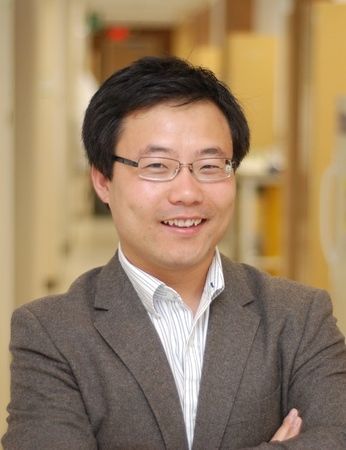 | Keynote Presentation Rapid and Ultra-sensitive Diagnostics Using Digital Detection
Weian Zhao, Associate Professor, Department of Biomedical Engineering, University of California-Irvine, United States of America
We will present our most recent droplet based digital detection
platforms for rapid and sensitive detections, which could find potential
applications at the point-of-care (POC). |
|
17:35 | 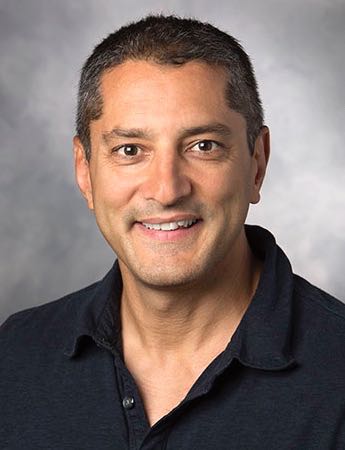 | Keynote Presentation Fractionation and Analysis of Nuclear versus Cytoplasmic Nucleic Acids from Single Cells
Juan Santiago, Charles Lee Powell Foundation Professor, Stanford University, United States of America
Single cell analyses (SCA) have become powerful tools in the study heterogeneous cell populations such as tumors and developing embryos. However, fractionating and analyzing nuclear versus cytoplasmic fractions of nucleic acids remains a challenge as these fractions easily cross-contaminate. We present a novel microfluidic system that can fractionate and deliver nucleic acid (NA) fractions from the nucleus (nNA) versus the cytoplasm (cNA) from single cells to independent downstream analyses. Our technique leverages a selective electrical lysis which disrupts the cell’s (outer) cytoplasmic membrane, while leaving the nucleus relatively intact. We selectively extract, purify, and preconcentrate cNA using isotachophoresis (ITP). The ITP-focused cNA and nNA-containing nucleus are separated by ITP and fractionated at a bifurcation downstream and then extracted for off chip analyses. We will present example applications of this fractionation including qPCR and next generation sequencing (NGS) analyses of cNA vs. nNA. This will include preliminary NGS analyses of nuclear vs. cytoplasmic RNA fractions to analyze gene expression and splicing. We hypothesize that the robust and precise nature of our electric field control is amenable to further automation to increase throughput while removing manuals steps. |
|
17:55 |  | Keynote Presentation Chip-Scale Microfluidic Physiological Circulation Systems
Abraham Lee, Chancellor’s Professor, Biomedical Engineering & Director, Center for Advanced Design & Manufacturing of Integrated Microfluidics, University of California-Irvine, United States of America
There has been a recent surge in the development of microphysiological systems and organ-on-a-chip for drug screening and regenerative medicine. Over the years, drug screening has mostly been carried out on 2D monolayers in well plates and the drugs are not delivered through blood vessels as in vivo treatments. Through the advancement of microfluidics technologies, we have enabled the automation of biological fluids delivery through physiological vasculature networks that mimic the physiological circulation of the human body. The critical bottleneck is to engineer the microenvironment for the formation of vascularized 3D tissues and to also pump and perfuse the tissue vascular network for on-chip microcirculation. This in vitro model system can be used to screen cancer drugs by mimicking the delivery of the drugs through capillary blood vessels. On the other hand, microfluidics play an important role in the recent advances in liquid biopsy and the ability to specifically isolate and capture rare cells such as circulating tumor cells. These two technologies may go hand-in-hand to connect in vitro screening to in vivo screening with great potential in the development of personalized medicine.
|
|
18:15 | Close of STRATEC Consumables Symposium |
18:30 | Cocktail Reception for All Conference Attendees: Enjoy Beer, Wine, Appetizers and Network with Fellow Delegates, Speakers, Exhibitors in the Exhibit Hall and View Posters Sponsored by STRATEC Consumables GmbH |
20:00 | Close of Day 2 of the Conference. Continue Networking in Downtown San Diego (Trolleys to the City are Available Right Behind the Conference Venue). |


